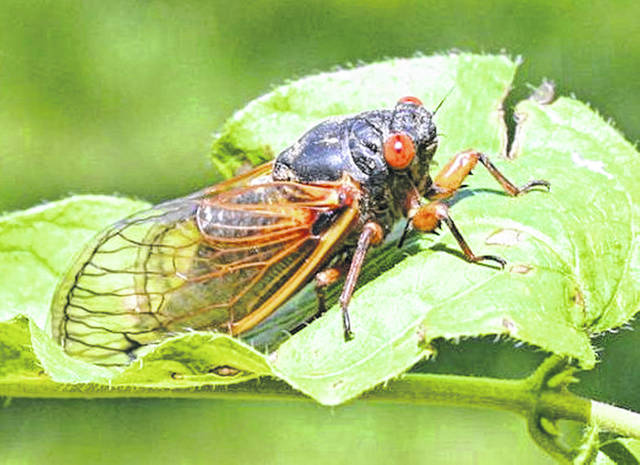
Spring and summer bring many things. Blooming flowers, warmer weather but some summers also bring the buzzing of cicadas. Cicadas in the area this year will be even louder than in previous years because of Brood X, which is this year’s version of the periodical cicada.
Brood X, or Brood 10, is a version of the periodical cicada that only comes up from the ground once every 17 years.
Kathy Garza-Behr, wildlife communications specialist at the Ohio Division of Wildlife, said the last hatch of Brood X was in 2004, or the Great Eastern Brood as she called it, and it is known for its unique coloration of a black body and red eyes.
She said the 2004 hatch was “sizable” and that some entomologists recorded some areas where cicadas were coming out of the ground at “more than 356 cicadas” per square yard. Behr also said that Ohio is one of the 16 states that will experience Brood X.
A news release from the Ohio Department of Agriculture said the hatch will stretch from Georgia to New York and go as far west as the Mississippi River.
According to Ryan Larrick, survey technician from the Plant Health Division of the Ohio Department of Agriculture, it is believed they do this to throw off predators. Larrick said that if they came out at the same time every year, their predators would be able to learn it and “sync up” when they were going to emerge from the ground.
Cicadas, are “are a flying insect, known for being loud by producing sound with a specialized structure.” They live underground for the vast majority of their lives, drinking tree root sap until growing to full size and emerging from the ground. They will then climb onto high places and molt out of their skin into their winged adult form. After finding mates with their buzzing and the female lays its eggs, the adults die. Six to seven weeks after that, the eggs hatch and will then fall and dig into the ground, replaying the process once again.
Larrick said that the major threat from the cicadas is they could destroy recently planted saplings or trees when the adults cut into the trees and drink their sap or females cut open branches to lay their eggs.
Larrick said the counties that will see the brunt of Brood X will be Defiance, Franklin, Greene, Hamilton, Logan and Montgomery. He also said Highland County will “most likely” see and hear the residuals of them from other counties “where we know they will be coming out in mass.”
“The counties most affected will be on the western border,” Behr said. “Hamilton and Montgomery will see larger hatches, but I do believe you will see them in Highland County as well. They will be less than the peak counties. I live in Adams and have the tell-tale chimneys under my silver maples. Once the weather conditions are right, they will emerge.”
Reach Jacob Clary at 937-402-2570.


